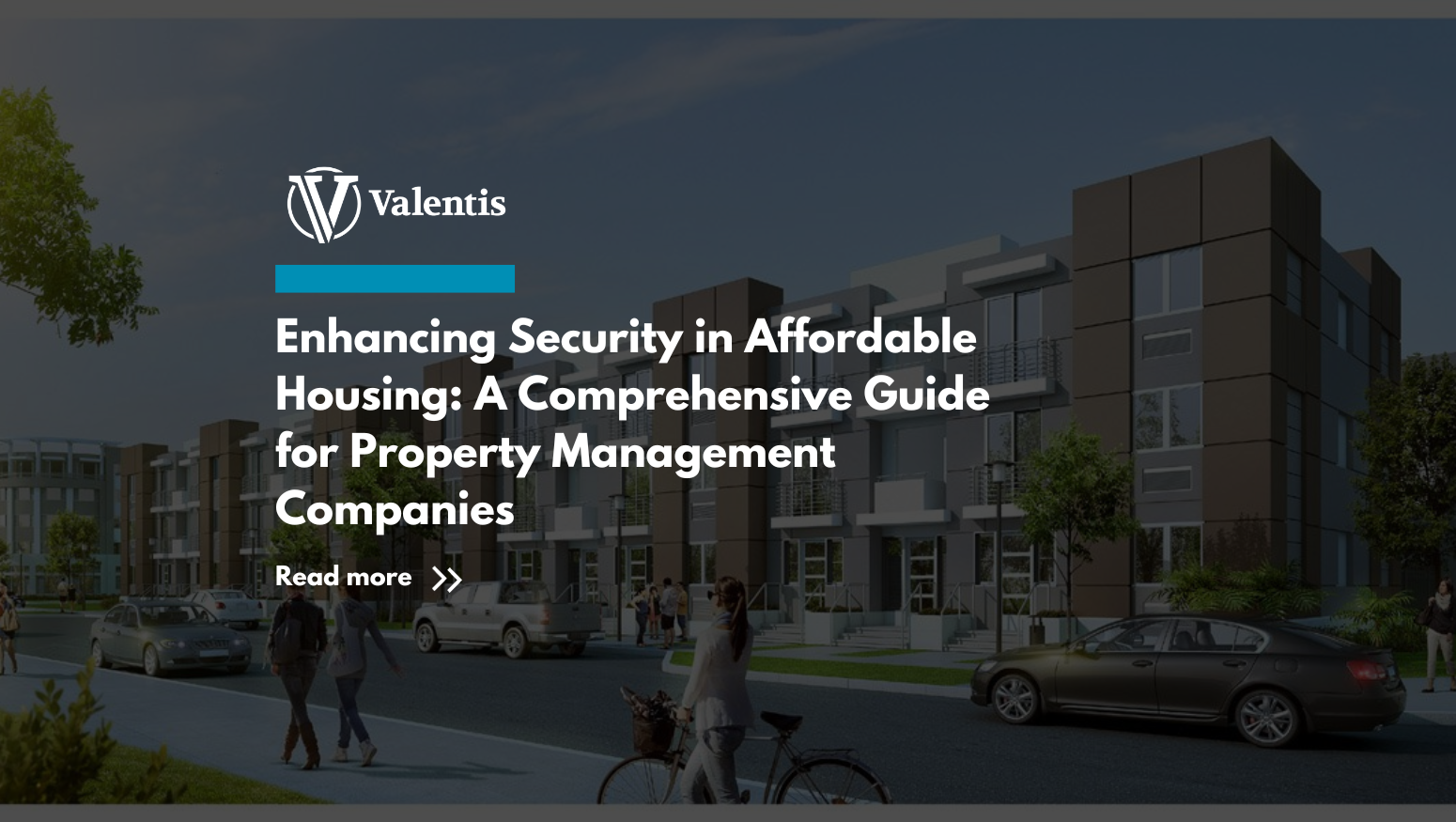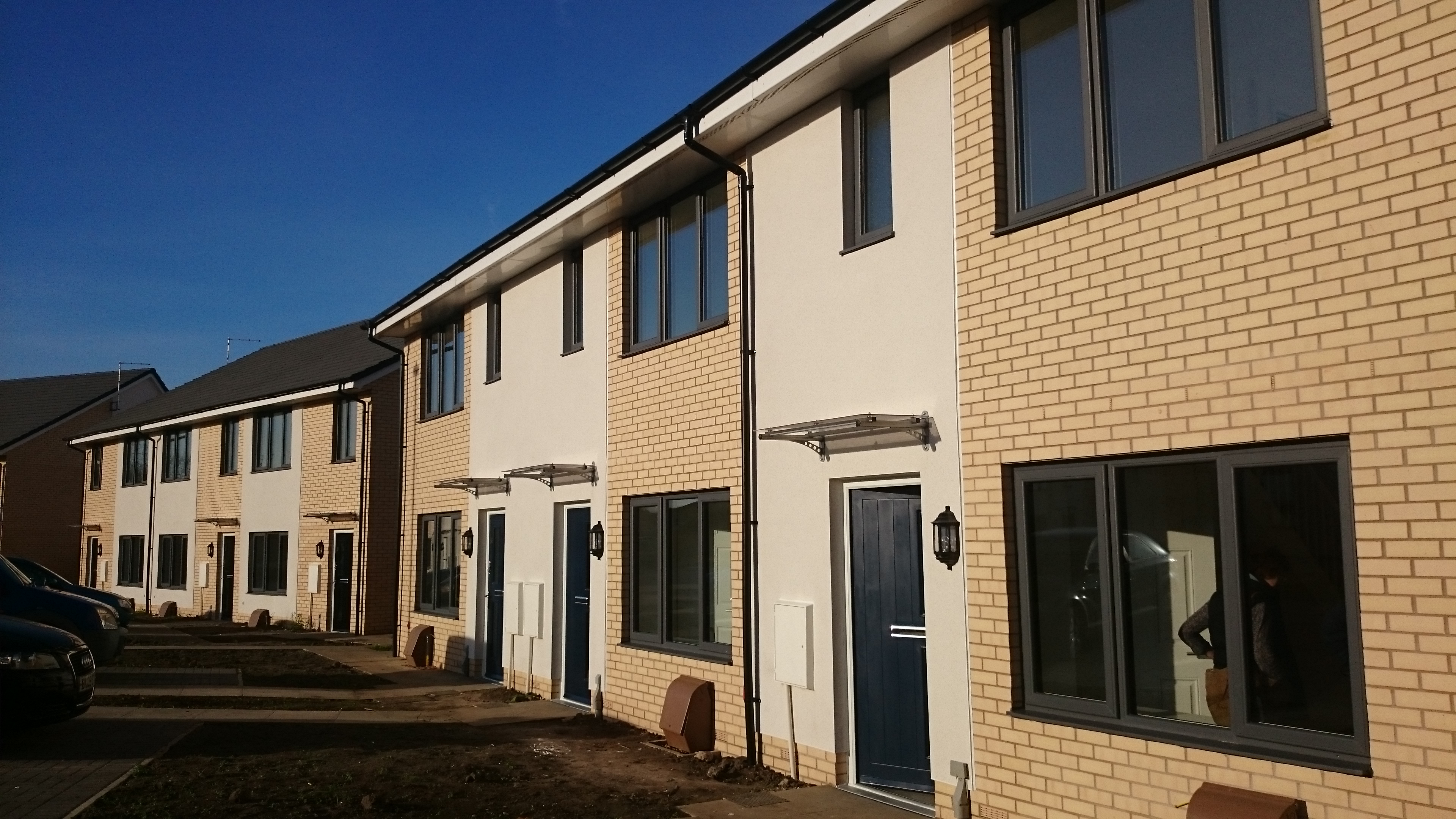Enhancing Security in Low-Income Housing Communities: A Comprehensive Guide
January 3, 2024
Enhancing Security in Low-Income Housing Communities: A Comprehensive Guide by Valentis
At Valentis, we understand the importance of security, especially in low-income housing communities where unique challenges must be met. Our armed security services are dedicated to providing the utmost safety and peace of mind to residents. In this blog post, we present a comprehensive guide to enhancing security in low-income housing communities. We'll discuss the specific needs of these communities, how to conduct a security assessment, the importance of community engagement, and why hiring a qualified security company like Valentis is crucial.
In this post we'll cover:
- Understanding the Unique Security Needs of Low-Income Housing Communities
- Security Assessment Preparation
- Conducting the Security Assessment
- Analyzing Assessment Findings
- Developing a Security Enhancement Plan
- Community Involvement
- Training and Education
- Implementing Security Improvements
- Ongoing Evaluation
- Hiring a Qualified Security Company
Understanding the Unique Security Needs of Low-Income Housing Communities

Diverse Resident Populations
Low-income housing communities are often home to diverse groups of residents, ranging from families to seniors and individuals with various needs. Recognizing this diversity is key to tailoring security measures effectively.
Vulnerable Communities
Some residents may be more vulnerable due to economic or social factors. Security assessments should address these vulnerabilities while maintaining an inclusive and welcoming environment.
High Foot Traffic
These communities experience high foot traffic in common areas, making it easier for unauthorized individuals to enter. Properly managing access points and monitoring these areas is essential.
Limited Resources
Operating on tight budgets, many low-income housing communities require cost-effective security solutions. Prioritizing initiatives that offer the most significant impact with available resources is essential.
Security Assessment Preparation

Before conducting a security assessment, proper preparation is essential:
Assembling Your Assessment Team
Form a dedicated team comprising property management representatives, security experts, local law enforcement, and residents. Each member brings a unique perspective to the process.
Gathering Relevant Information
Collect documentation such as crime reports, incident logs, emergency response plans, property layouts, and any existing security measures.
Establishing Assessment Objectives
Clearly define the goals and objectives of the security assessment, including what you aim to achieve and the outcomes you expect.
Conducting the Security Assessment
This section outlines the steps for conducting a comprehensive security assessment:
Physical Security Assessment
1. **Access Control Systems:** Evaluate the effectiveness of current access control systems, such as key card or fob systems, security gates, and surveillance at entrances.
2. **Video Surveillance:** Examine the placement, quality, and coverage of video cameras throughout the property.
3. **Lighting and Visibility:** Assess the adequacy of lighting in common areas to enhance visibility and deter criminal activity.
4. **Landscaping and Environmental Design:** Apply Crime Prevention through Environmental Design (CPTED) principles to improve security through landscaping and design modifications.
Resident Security Needs Assessment
1. **Identify Vulnerable Residents:** Recognize residents who may be more susceptible to security risks and address their specific needs.
2. **Evaluate Resident Engagement:** Gauge residents' involvement in the community's security efforts and seek their input on safety concerns.
Crime Data Analysis
1. **Review Historical Incidents:** Analyze past incidents and identify trends or recurring issues.
2. **Identify Hotspots:** Pinpoint areas with higher crime rates or incidents, which may require additional security attention.
Emergency Preparedness Review
1. **Evacuation Plans:** Review and update emergency evacuation plans for fires, natural disasters, or other emergencies.
2. **Fire Safety:** Evaluate fire safety measures, including alarm systems, fire extinguishers, and fire exits.
3. **Medical Emergency Protocols:** Ensure that the community is equipped to handle medical emergencies effectively.
Analyzing Assessment Findings
Once the assessment is complete, it's time to analyze the findings:
Identifying Security Weaknesses
Review the findings from the security assessment and identify specific weaknesses or vulnerabilities that need to be addressed.
Prioritizing Security Improvements
Prioritize the security enhancements based on the severity and urgency of the identified weaknesses. Some improvements may be more critical and require immediate attention.
Cost Estimates and Budget Considerations
Develop cost estimates for the proposed security enhancements and assess how they fit within the community's budget. Explore potential funding sources or cost-saving measures if necessary.
Developing a Security Enhancement Plan
With identified weaknesses and priorities in mind, develop a comprehensive plan for security enhancement:
Security Measures and Strategies
Create a comprehensive plan detailing the security measures and strategies to be implemented, tailored to the specific needs and vulnerabilities identified during the assessment.
Timelines and Implementation Phases
Outline a timeline for the implementation of security enhancements, including distinct phases or milestones to track progress.
Resource Allocation
Clearly define how resources, including personnel, equipment, and budgets, will be allocated for each security improvement.
Community Engagement Strategies
Involve residents in the security enhancement planning process and outline strategies for engaging the community in ongoing safety efforts.
Community Involvement
Engaging the community in the security process is vital:
Resident Meetings and Input
Organize regular meetings with residents to provide updates on security improvements, gather feedback, and encourage their participation in security initiatives.
Neighborhood Watch Programs
Establish and promote neighborhood watch programs, fostering a sense of community responsibility for security and creating opportunities for residents to contribute actively.
Building Trust and Cooperation
Promote trust and cooperation between residents, property management, security personnel, and local law enforcement to create a unified approach to security.
Training and Education
Proper training and education are essential components of a successful security program:
Security Personnel Training
Ensure that security personnel are adequately trained to handle the specific security needs of the community, including emergency response and conflict resolution.
Resident Safety Training
Offer safety training to residents, including how to recognize and report security concerns, what to do in emergencies, and how to use security features effectively.
Emergency Preparedness Drills
Conduct regular emergency preparedness drills to ensure that both residents and staff are well-prepared for various emergency scenarios.
Implementing Security Improvements
Continuously monitor and adjust the security plan as needed:
Monitoring Progress
Continuously monitor the progress of security enhancement implementations to ensure that they are on track and making a difference.
Adjusting the Plan as Needed
Be ready to adapt the security plan and its elements if new vulnerabilities emerge, or if existing strategies require adjustments.
Ongoing Evaluation
Regularly assess the effectiveness of security measures:
Regular Security Audits
Conduct regular security audits and assessments to evaluate the effectiveness of security measures and identify areas for improvement.
Resident Feedback
Encourage residents to report security concerns and gather their feedback on the impact of security enhancements.
Incident Reporting and Analysis
Continually analyze incident reports to identify patterns, trends, and potential areas for improvement in security measures.
Hiring a Qualified Security Company
Ensuring the expertise and competence of the security company you hire is vital:
Qualifications and Experience
When selecting a security company, ensure that they have the necessary qualifications and experience to handle the unique security needs of low-income housing communities.
Training and Certification
Verify that the security company's personnel are properly trained and certified, especially in areas such as emergency response and conflict resolution.
References and Track Record
Check the company's references and track record. Have they successfully provided security services for similar housing communities in the past?
Customized Security Solutions
Collaborate with the security company to develop customized security solutions that align with the specific vulnerabilities and needs identified in your security assessment.
In conclusion, enhancing security in low-income housing communities is a multifaceted endeavor that requires careful planning, community involvement, and the expertise of a qualified security company like Valentis. By following the steps outlined in this comprehensive guide, you can create a safer and more secure living environment for all residents, fostering a sense of well-being and community trust.
For more information on how Valentis can assist you in securing your low-income housing community, please contact us!




